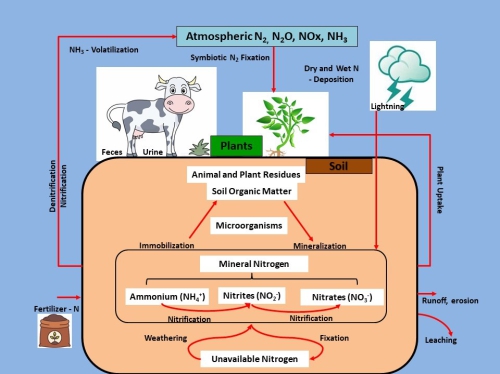As an important part of biogeochemical cycling, the nitrogen cycle modulates terrestrial ecosystem carbon storage, water consumption, and environmental quality. It remains unclear how nitrogen dynamics affects carbon and water budgets in China. Incorporating the terrestrial nitrogen cycle into the Noah LSM with multi-parameterization options (Noah-MP) helps address the above question.
By comparing the simulations of the nitrogen-augmented Noah-MP-CN with those from the original Noah-MP in China, a recent study quantifies the impacts of nitrogen dynamics on the terrestrial carbon and water cycles, as reported in Advances in Atmospheric Sciences.
The lead author is LIANG Jingjing, a PhD student from the Institute of Atmospheric Physics, Chinese Academy of Sciences. "Our study is the first regional application of Noah-MP-CN by explicitly accounting for spatially varying biogeochemical parameters based on the previous point-scale work," explains LIANG.
The results show that incorporating nitrogen dynamics improves the simulations of gross primary productivity (GPP) and leaf area index (LAI) in most of the regions in terms of a slightly higher correlation coefficient, a much lower root-mean-square error (RMSE), and a better spatial pattern of multi-year climatology. The overestimation of GPP by Noah-MP with a dynamic vegetation option is greatly reduced by considering the limitation of nitrogen availability, especially in the southeastern regions of China. Moreover, Noah-MP-CN provides a more accurate LAI simulation in different land-cover types, with reduced RMSEs and increased correlations.
The impacts of fertilizer application over cropland on carbon fixation, water consumption and nitrogen leaching are investigated through a trade-off analysis. Compared to halved fertilizer use, the actual quantity of application increases GPP and water consumption by only 1.97% and 0.43%, respectively; however, the nitrogen leaching is increased by 5.35%. This indicates that the current level of fertilizer use has only a negligible impact on water consumption but a damaging impact on the environment.

Schematic diagram of the nitrogen cycle. (Image by LIANG Jingjing.)
Despite the superior performance of Noah-MP-CN over Noah-MP, Noah-MP-CN continues to overestimate LAI and GPP. Future work needs to focus on more systematic calibration of model parameters and including more biogeochemical processes such as soil organic matter (SOM) and microbe dynamics.
"As the largest global reservoir of terrestrial organic carbon, SOM not only affects the storage of nutrients in the soil (especially for nitrogen) but also results in environmental pollution," says the corresponding author, Prof. Zong-Liang YANG from the Department of Geological Sciences, Jackson School of Geosciences, the University of Texas at Austin. “More concerted efforts are required to improve our understanding and modeling the SOM and microbe dynamics in land surface and earth system models.”
Reference
J. J. Liang, Z.-L. Yang, X. T. Cai, P. R. Lin, H. Zheng, Q. Y. Bian, 2020: Modeling the impacts of nitrogen dynamics on regional terrestrial carbon and water cycles over China with Noah-MP-CN. Adv. Atmos. Sci., https://doi.org/10.1007/s00376-020-9231-6.
